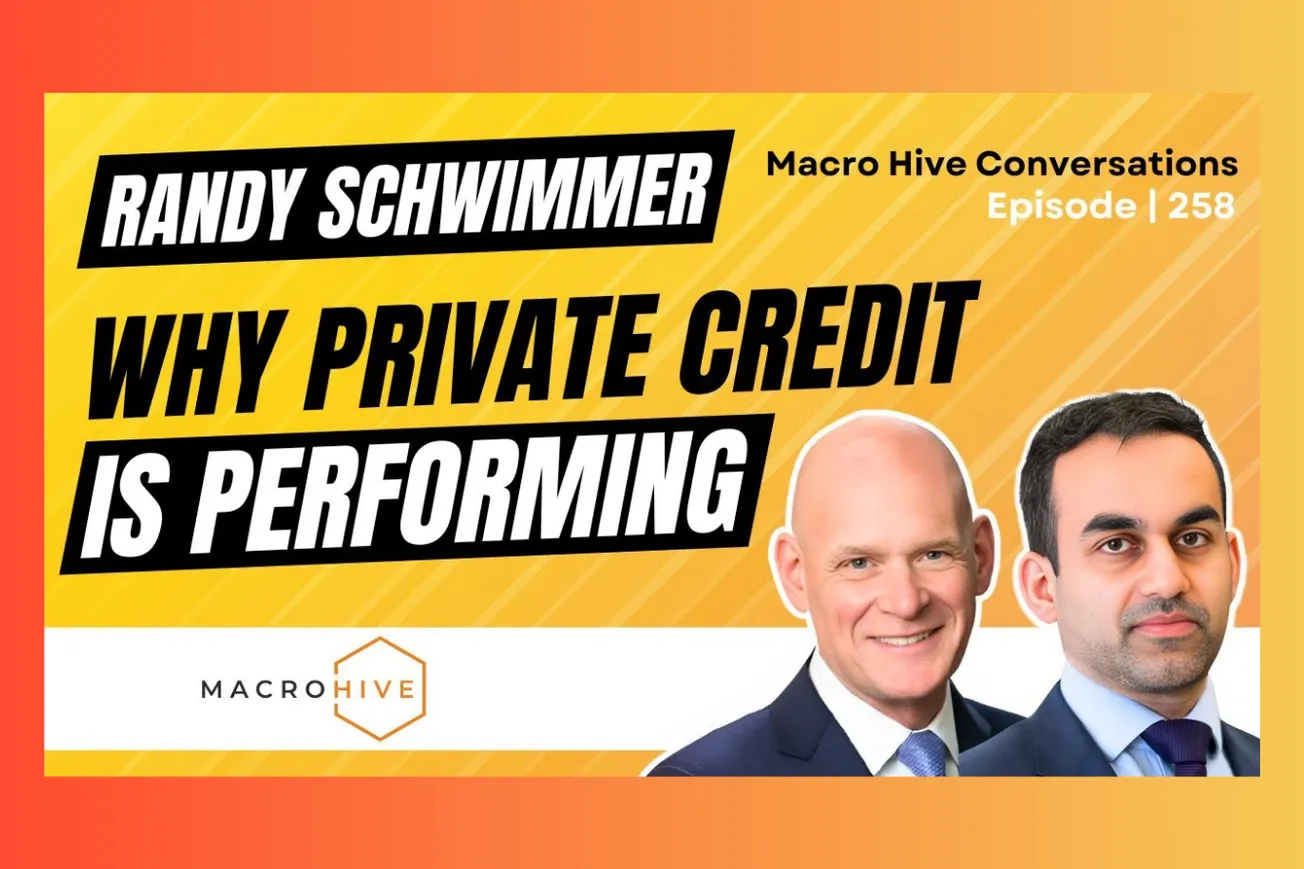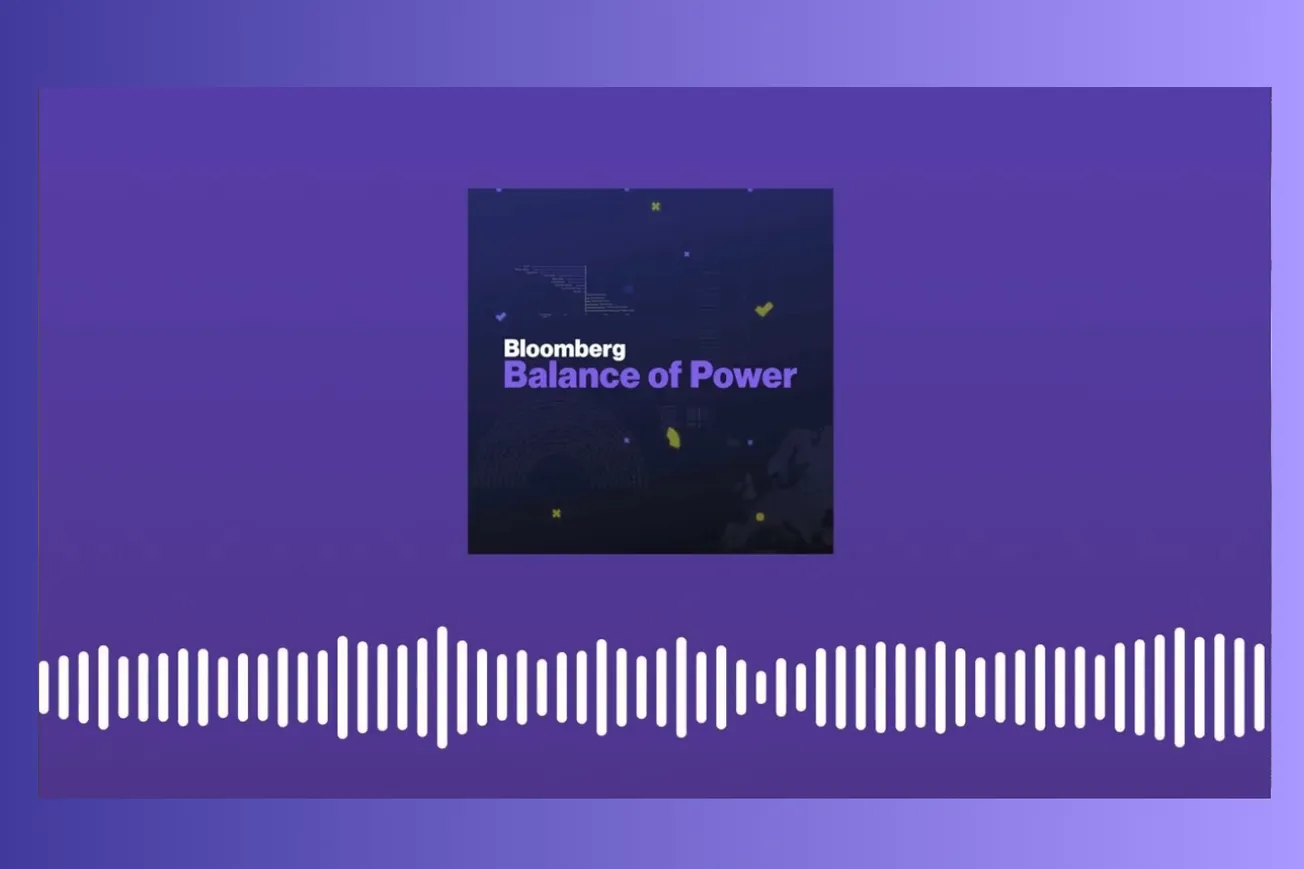Table of Contents
Churchill Asset Management's Randy Schwimmer reveals why private credit defied dire predictions during the rate hiking cycle, delivering sub-2% default rates while public markets struggled with over 5% defaults.
Key Takeaways
- Private credit default rates stayed below 2% in 2024 vs over 5% for broadly syndicated loans, defying widespread predictions
- The "Newton apple moment": illiquidity doesn't mean bad credit - it creates more stable valuations and better outcomes
- Banks retreated from middle market lending due to regulatory capital requirements, creating sustainable competitive moat for private credit
- Service-oriented businesses with recurring cash flows provide recession resilience compared to manufacturing or cyclical sectors
- Dual LP/lender model gives Churchill access to 1,000+ deals annually from 300 private equity relationships while maintaining selectivity
- AI adoption accelerating in portfolio companies for complex data analysis and efficiency improvements, not just headline-grabbing applications
- European and Asian investors view private credit as "steady cam" stabilizer for portfolios after 2022 public market volatility
- Tariff uncertainty creating deal pipeline pause, but experienced managers expect strong second half recovery once policy clarity emerges
- Middle market sweet spot offers better covenant protection than large-cap covenant-lite structures favored by banks
- Global private credit adoption following US playbook as institutional investors recognize asset class legitimacy
From Banking Refugee to Private Credit Pioneer
Randy Schwimmer's journey from JP Morgan's leveraged lending business to co-founding Churchill Asset Management in 2006 perfectly captures the evolution of private credit as an asset class. Spending 15 years at JP Morgan running middle market and syndicated loan trading, he witnessed firsthand why banks gradually retreated from this space.
"The Fed and the OCC was saying we don't really like you holding these leveraged loans because they're risky and therefore we're going to charge you more capital for this," Schwimmer explains. Banks realized they were "much better off instead of holding these loans just selling these loans" to generate fee income without capital requirements.
This regulatory-driven retreat created the opening that Churchill and other private credit managers have exploited for nearly two decades. Now part of TIAA with $80 billion in assets under management, Churchill represents the institutionalization of what began as an opportunistic response to bank withdrawal.
The Great Default Rate Misconception
Perhaps the most striking insight from Schwimmer's analysis involves the complete reversal of conventional wisdom about default rates. For years, market participants assumed smaller middle market companies would naturally experience higher default rates than large, liquid companies with public market access.
"When you started to dig into the details, what I discovered pretty early on was that actually when it came to defaults and losses, the dynamics of what was going on in the liquid loan market were actually worse for investors," Schwimmer reveals.
The reason relates to trading dynamics in stressed situations. In public markets, if you don't trade out quickly "you were kind of stuck with a loan that traded well below par." Distressed funds buying at 60 cents are happy to exit at 70, but original lenders who entered at par face significant losses.
Private credit's illiquidity - historically viewed as a weakness - actually creates better workout dynamics. "If you are holding the assets for as long as you need to see that value get back to par and if the other lenders in the lender group are of like mind, you can actually get your money out for the most part at par."
The Playbook That Worked
When interest rates spiked dramatically, research teams predicted widespread defaults in private credit. Instead, default rates stayed below 2% compared to over 5% for broadly syndicated loans. This wasn't luck - it reflected systematic preparation by experienced managers.
"When we look at a deal we say all right, it's great now... what happens if interest rates go up?" Schwimmer explains their approach. "We model much higher interest rates in the projections that we do... we look at how the company did during the recession and we take that performance, let's just throw out 20% revenue cut, 20% cash flow cut, and we model a recession within 18 months."
This stress testing meant portfolios were already designed "to withstand the hurricane force of the winds" when rates actually rose. While interest coverage ratios compressed from 4-5x to 2-3x, they never fell below the 2x threshold that would trigger serious problems.
More importantly, the private equity sponsor ecosystem provided additional support. "Private equity sponsors would work with the lenders to come up with an amended debt structure" during temporary difficulties, including payment deferrals or PIK interest arrangements until companies recovered.
The Service Economy Advantage
Churchill's sector focus reflects deep understanding of what works during economic cycles. Rather than chasing high-growth stories, they target service-oriented businesses with predictable cash flows and lower capital intensity.
"To prevent some of the cyclical winds that occur when you have up and down drafts with interest rates in the economy... the service businesses, more free cash flow oriented, less capex, have been more successful particularly in the credit business when it's all about minimizing losses," Schwimmer notes.
Examples include commercial landscaping - a business that proved remarkably resilient during COVID when offices emptied but buildings still needed maintenance. "We discovered that companies that manage those buildings actually are very stable from a revenue and cash flow perspective."
Healthcare technology represents another sweet spot, particularly enterprise-focused solutions that become embedded in client operations over time. These businesses benefit from high switching costs and long-term relationships rather than depending on cutting-edge innovation that could be disrupted.
The LP Advantage: Dual-Hat Strategy
Churchill's competitive edge comes from their dual role as both private equity fund investor (LP) and direct lender. With nearly $20 billion committed to 300 different private equity firms, they see approximately 1,000 deals annually while maintaining the flexibility to be highly selective.
"As an LP, we're seeing all the deal flow from these sponsors... they want us in fund four and fund eight and they want us to be in fund five or fund nine, so they continue to show us transactions and we can be picky without the sponsor being upset with us."
This creates a virtuous cycle. Private equity sponsors value their LP relationship and continue sharing opportunities even when Churchill passes on specific deals. The result: access to high-quality deal flow while turning down roughly 95% of opportunities to focus only on the most attractive credits.
The model also provides unique market intelligence. With LP investments spanning 3,000 companies - ten times their direct lending portfolio - Churchill gains macro insights into sector performance and trends that wouldn't be visible from direct lending alone.
Technology Sector Navigation
While avoiding the most speculative technology plays, Churchill has developed nuanced views on where tech investing makes sense within a credit framework. The key distinction involves enterprise-focused solutions with embedded customer relationships versus consumer-facing or highly disruptive technologies.
"We focus on more enterprise focused business service oriented technology that is ingrained and built into... part of the production of the business that focuses on improvement and efficiencies," Schwimmer explains. These companies provide measuring and efficiency tools that help clients reduce costs - services that become more valuable during economic uncertainty.
The approach avoids the "speed of evolution of advancement" risks that affect pure-play technology companies where "you really don't know if someone will come in and invent a better mousetrap."
AI: Beyond the Hype Cycle
Regarding artificial intelligence adoption, Schwimmer sees practical applications gaining traction across portfolio companies, though often not labeled as "AI" explicitly. The focus centers on complex data analysis and rapid calculations rather than headline-grabbing applications.
"The sophistication of those calculations as enhanced by AI has really been the driver for a lot of the applications that private equity sponsors are using for things like manufacturing and even in the service technology areas where there's a need to take an enormous amount of complicated data and quickly synthesize and analyze it."
Churchill itself is exploring AI applications for portfolio management, analyzing data from their 3,000 LP investment companies to gain sector insights. "We're starting to think about ways that we can analyze that data... to tell us something about the sectors that they're operating in in ways that 5-10 years ago wouldn't be possible."
Global Market Development
International expansion reveals interesting patterns in private credit adoption. European and Asian investors have reached a sophisticated understanding of the asset class that goes beyond simple yield chasing.
"There is a commonality to their view on private capital and the commonality is that they have already made the decision that private capital needs to be a part of their portfolio," Schwimmer observes. These investors view private credit as a "steady cam" stabilizer after experiencing the 2022 public market volatility.
The appeal isn't just higher yields but consistency across cycles. "Whether it's high rates or low rates, whether it's growth high growth in the economy or low growth, whether it's higher inflation or lower inflation, stability of those returns remains."
This mirrors the institutional adoption pattern in the US, suggesting private credit's expansion internationally follows predictable development stages rather than representing temporary capital flows.
Bank Competition: Real but Limited
While banks returned to leveraged lending in 2024, their re-entry focused almost exclusively on refinancings and repricings rather than new LBO activity. "95% of the deals they did were refinancings and repricing, so they kind of were unable to get back into the LBO market for the most part."
More fundamentally, bank competition in the middle market remains constrained by structural factors. Large bank consolidation (JP Morgan Chase now comprises numerous historic institutions) created economies of scale that favor larger deals, while regulatory capital requirements continue making small loans economically unattractive.
Even when banks compete for larger deals, they must offer covenant-lite structures to match private equity sponsor expectations. "Covenant light transactions... means bond-like covenants... you could theoretically have infinite leverage as long as you're still paying your interest payments."
Churchill prefers the middle market's more conservative structures with financial maintenance covenants and lower leverage, viewing them as more "all weather" than the covenant-lite alternatives.
The Asset Allocation Evolution
Private credit's institutional acceptance reflects broader portfolio construction changes. Initially "like a teenager trying to move out of their house," private credit was grouped with real estate, private equity, or even hedge funds depending on investor categorization systems.
"As the teenager has grown up, they get their own apartment," Schwimmer notes. "I think private credit now is firmly established in its own category."
The next evolution involves retail and wealth management channels, where growing sophistication allows investors to understand that "being illiquid isn't necessarily the best thing when you have the kind of headline risks that we have been witnessing over the last several years."
This represents a fundamental shift from viewing liquidity as universally positive to recognizing illiquidity's stabilizing benefits during volatile periods.
Current Risk Assessment
Looking ahead, Schwimmer identifies tariff uncertainty and geopolitical risks as primary concerns, particularly because "the Fed really doesn't have any control over tariffs and geopolitical issues."
Unlike interest rate policy where businesses can eventually adapt to known parameters, trade policy uncertainty prevents planning. "Bad news is better than uncertainty... if I know I have to factor in a 20 or 30% tariff, okay fine, at least I know exactly what it is and I can work around that."
This uncertainty explains the current deal pipeline pause, with second quarter activity notably lighter than historical patterns. However, Schwimmer expects recovery once policy clarity emerges: "Once the deal is settled then we can move on."
The business community's adaptability provides confidence in eventual normalization. "Business people are really good at adjusting to the realities of the economy and the markets, but if I'm not sure... how can I plan for it?"
Lessons from Longevity
Churchill's 20-year track record through multiple cycles offers valuable perspective on sustainable private credit practices. Their investment committee has remained together for two decades, approving every deal with shared institutional knowledge about what works and what doesn't.
"We worry... is this deal going to be the one that's going to get us into trouble... we're super picky and super careful about what's the impact of macro things going on in the world right now to this company and then what's going on with the micro."
The focus on loss avoidance over absolute returns reflects credit investing fundamentals: "It's not so much the deals you do that comprise your track record, it's the deals you don't do - the more risky ones that you avoid."
This conservative approach, combined with systematic stress testing and diversification across service-oriented sectors, created the resilience that allowed private credit to outperform dire predictions during the recent rate cycle.
The Steady Cam Advantage
Perhaps the best metaphor for private credit's role comes from Schwimmer's film industry comparison: "Private credit is the steady cam of the capital markets - it's the stabilizer of the picture that allows investors to maybe not get 20% plus returns for private credit but... 10 to 12% returns that will be stable."
This stability premium becomes increasingly valuable as public markets face greater volatility from geopolitical uncertainty, policy changes, and technological disruption. While private credit won't generate venture capital-style returns, it provides predictable income streams that complement rather than compete with growth-oriented investments.
For institutional investors managing long-term liabilities, this steady cam function justifies private credit's growing allocation regardless of absolute yield levels. The asset class has evolved from opportunistic bank replacement to essential portfolio stabilizer - a transformation that appears sustainable across economic cycles and geographic markets.
The lesson for investors isn't that private credit represents a magic solution, but rather that illiquidity, properly managed, can create structural advantages that more than compensate for the inability to trade positions quickly. In an era of increasing market volatility, that steady cam function becomes more valuable, not less.





